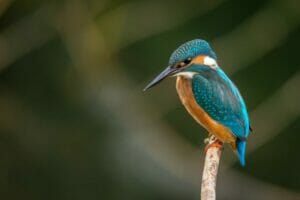 Have you heard of Nature Deficit Disorder?
Have you heard of Nature Deficit Disorder?
Richard Louv introduced the term “Nature-Deficit Disorder” in 2005 with the publication of his best-selling book, “Last Child in the Woods: Saving Our Children from Nature-Deficit Disorder.” He coined the phrase to serve as a description of the human costs of alienation from nature and it is not meant to be a medical diagnosis (although perhaps it should be). He argues that all of us, especially children, are spending more time indoors, which makes us feel alienated from nature and perhaps more vulnerable to negative moods or reduced attention span.
Nature-deficit disorder is the idea that human beings, especially children, are spending less time outdoors, and the belief that this change results in a wide range of behavioral problems. This disorder is not recognized in any of the medical manuals for mental disorders, such as the ICD-10 or the DSM-5.
Among the reasons for this Nature-deficit disorder are :
- the proliferation of electronic communications
- poor urban planning
- disappearing open space
- increased street traffic
- diminished importance of the natural world in public and private education
- parental fear magnified by news and entertainment media.
- devaluing of independent play.
 An expanding body of scientific evidence suggests that nature-deficit disorder contributes to a diminished use of the senses, attention difficulties, conditions of obesity, and higher rates of emotional and physical illnesses. Research also suggests that the nature-deficit weakens ecological literacy and stewardship of the natural world. These problems are linked more broadly to what health care experts call the “epidemic of inactivity”.
An expanding body of scientific evidence suggests that nature-deficit disorder contributes to a diminished use of the senses, attention difficulties, conditions of obesity, and higher rates of emotional and physical illnesses. Research also suggests that the nature-deficit weakens ecological literacy and stewardship of the natural world. These problems are linked more broadly to what health care experts call the “epidemic of inactivity”.
Have you heard of Nature Deficit Disorder ?
Richard Louv proposes some ways we can reduce this Nature Deficit Disorder
- Environmental literacy by connecting children with nature should be considered as fundamental elements of children’s cognitive development, as well as their psychological and physical health.
- Future education reform must widen the definition of the classroom.
- To help young people learn in nature, not just about nature, policy-makers must view parks, wildlands, farms and ranches as the new schoolyards.
- Expand the number of nature-oriented preschools, including experiential education and greened schoolyards in Head Start.
- Using new and old tools of social networking, families can band together to experience outdoors adventures — two, three, five families agreeing to meet, say, at a county park on Saturdays.
LISTEN TO MY PODCAST ON THIS TOPIC HERE




























